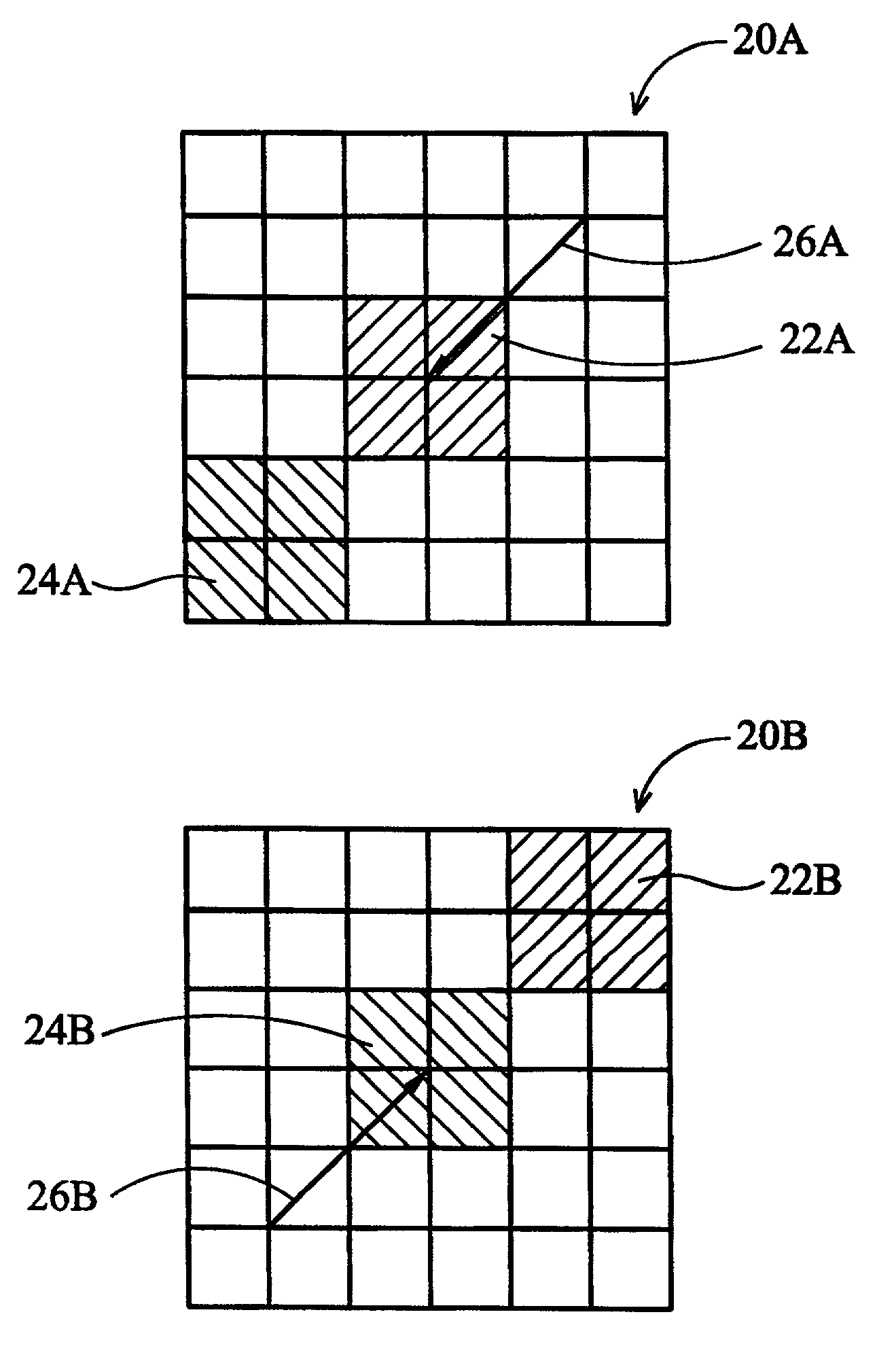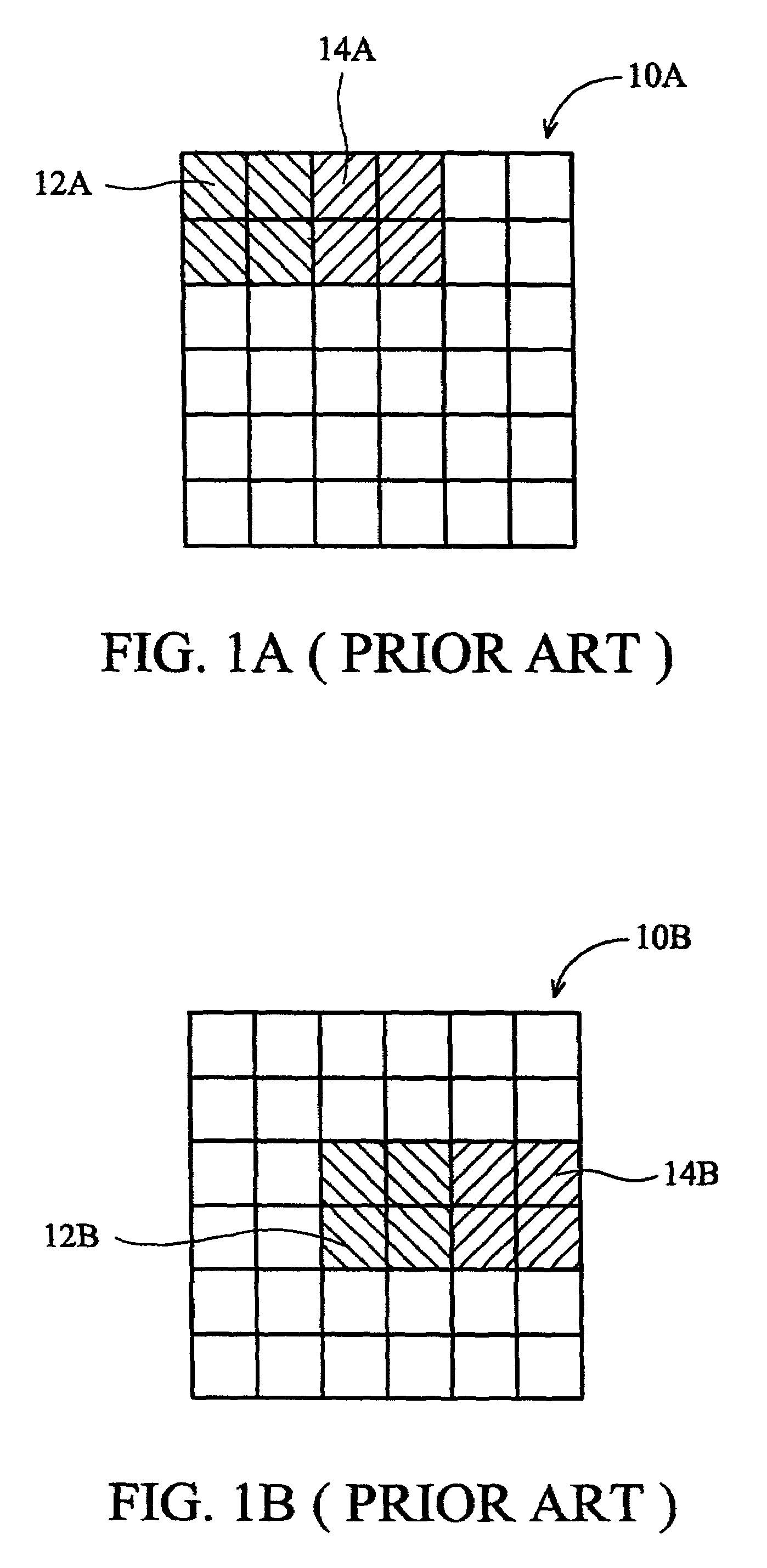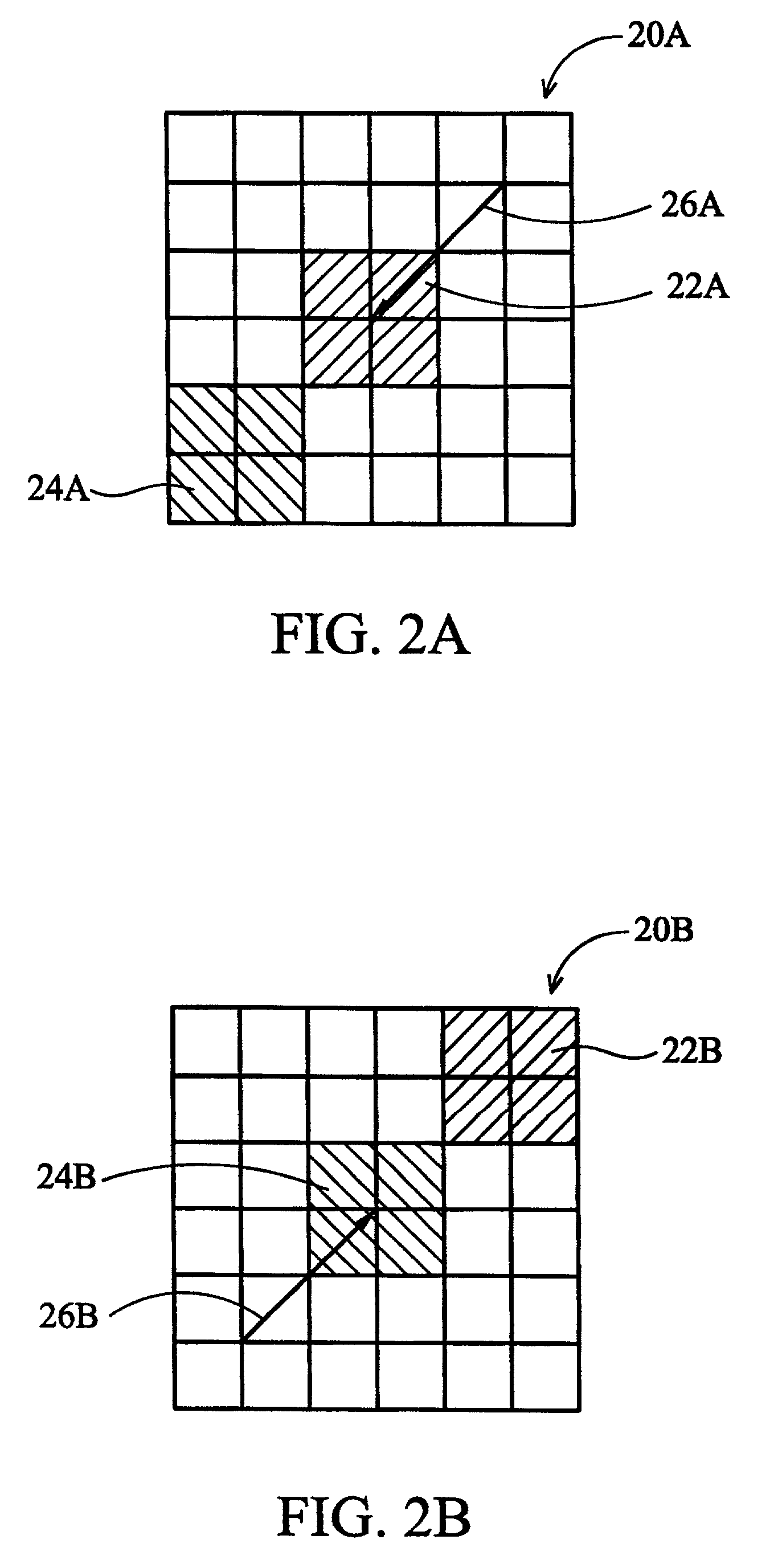Method for detecting movement of image sensors
a technology of image sensor and movement, applied in the field of detection of can solve the problems of slow determination rate and many sources of noise, and achieve the effect of ensuring the accuracy of comparison, reducing data and operation, and quickly and accurately determining the movement of image sensor
- Summary
- Abstract
- Description
- Claims
- Application Information
AI Technical Summary
Benefits of technology
Problems solved by technology
Method used
Image
Examples
first embodiment
[0014
[0015]FIG. 2A and FIG. 2B show the method to determine the movement of an image sensor by block matching according to the embodiment of the present invention.
[0016]The first frame 20A is the image captured by the image sensor in a first location, and the second frame 20B is the image captured by the image sensor when the image sensor moves to a second location. Here, the size of the frame captured by the image sensor is 6×6 units. The frame block 22A is captured from the first frame 20A, wherein the size of the frame block 22A is 2×2 units. Then, frame block matching is performed to find the frame block 22B matching the frame block 22A in the second frame 20B, wherein the value of the matching function is the minimum. In addition, the frame block 22A is near the center of the first image 20A to avoid missing the matched frame block in the second image because the image sensor has moved too far.
[0017]Next, a verification process is performed, the present embodiment performing cr...
second embodiment
[0019
[0020]FIG. 2A and FIG. 2B show the method to determine the movement of an image sensor by block matching according to the embodiment of the present invention.
[0021]The first frame 20A is the image captured by the image sensor in a first location, and the second frame 20B is the image captured by the image sensor when the image sensor moves to a second location. Here, the size of the frame captured by the image sensor is 6×6 units. The frame block 22A is captured from the first frame 20A, wherein the size of the frame block 22A is 2×2 units. Then, frame block matching is performed to find the frame block 22B matching the frame block 22A in the second frame 20B, wherein the value of the matching function is the minimum. In addition, the frame block 22A is near the center of the first image 20A to avoid missing the matched frame block in the second image because the image sensor has moved too far.
[0022]Next, a verification process is performed, the present embodiment performing th...
third embodiment
[0025
[0026]FIG. 2A and FIG. 2B show the method to determine the movement of an image sensor by block matching according to the embodiment of the present invention.
[0027]The first frame 20A is the image captured by the image sensor in a first location, and the second frame 20B is the image captured by the image sensor when the image sensor moves to a second location. Here, the size of the frame captured by the image sensor is 6×6 units. The frame block 22A is captured from the first frame 20A, wherein the size of the frame block 22A is 2×2 units. Then, frame block matching is performed to find the frame block 22B matching the frame block 22A in the second frame 20B, wherein the value of the matching function is the minimum. In addition, the frame block 22A is near the center of the first image 20A to avoid missing the matched frame block in the second image because the image sensor has moved too far.
[0028]Next, a verification process is performed, the present embodiment ascertaining ...
PUM
 Login to View More
Login to View More Abstract
Description
Claims
Application Information
 Login to View More
Login to View More - R&D
- Intellectual Property
- Life Sciences
- Materials
- Tech Scout
- Unparalleled Data Quality
- Higher Quality Content
- 60% Fewer Hallucinations
Browse by: Latest US Patents, China's latest patents, Technical Efficacy Thesaurus, Application Domain, Technology Topic, Popular Technical Reports.
© 2025 PatSnap. All rights reserved.Legal|Privacy policy|Modern Slavery Act Transparency Statement|Sitemap|About US| Contact US: help@patsnap.com



